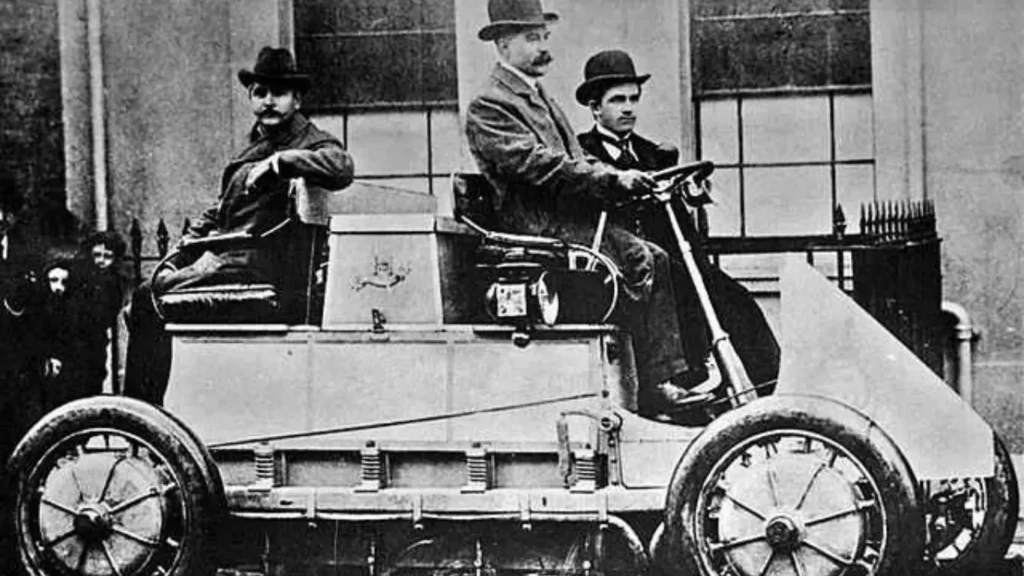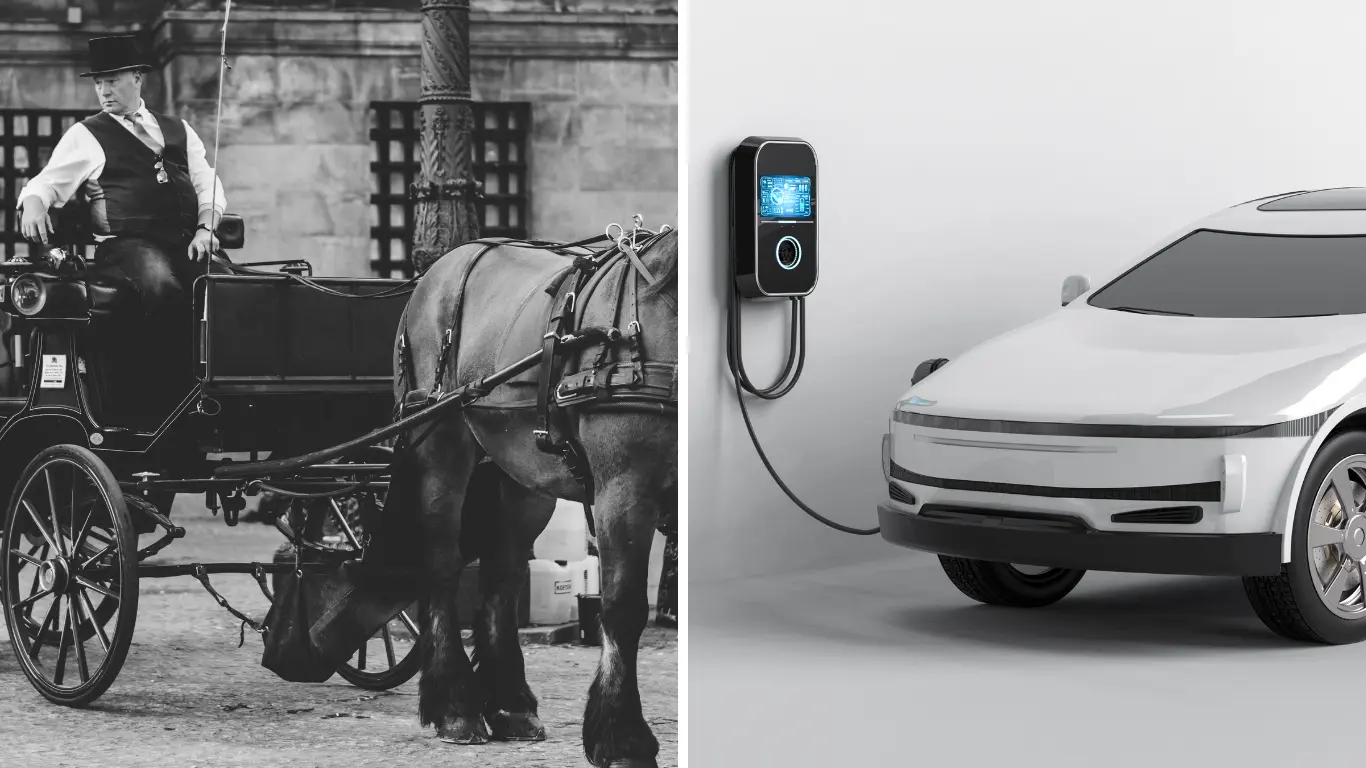Long before roaring engines and humming motors, humanity relied on the most primitive yet effective mode of transport—their own two feet. The journey of transportation is a tale as old as time, where necessity often played the role of the mother of invention, pushing humans to go faster, farther, and, eventually, greener. From barefoot wanderers to electric dreamers, let’s take a ride through history and see how climate tech is steering us toward a more sustainable future.
From Toes to Trails

In the dawn of civilization, feet were the ultimate all-terrain vehicles. They carried early humans across vast landscapes in search of food, shelter, and opportunity. But as populations grew and societies expanded, so did the demand for speed and efficiency. Enter the first great mobility hack: domesticated animals. Horses, donkeys, and oxen became the horsepower of ancient times, literally and figuratively. They pulled carts, carried goods, and fueled trade across continents.
As humans mastered the art of movement, the invention of the wheel around 3500 BCE revolutionized transportation. With this simple yet groundbreaking invention, rudimentary carts transformed into essential tools for agriculture and commerce. Civilizations like Mesopotamia, Egypt, and Rome rolled ahead, connecting towns and fostering cultural exchange. But while the wheel may have reinvented the road, it also introduced humanity to a long-lasting addiction—the pursuit of faster, more efficient travel.
Carriages, Coal, and Climate Concerns
Fast forward to the Middle Ages, and transportation had taken a luxurious turn. Carriages became the vehicle of choice for the aristocracy, each model more ornate and comfortable than the last. These elegant conveyances, drawn by steeds, were the limousines of their day. However, their reliance on animal power had its limits, and soon, the wind of change blew in with the Industrial Revolution.
Steam engines powered by coal arrived on the scene, replacing muscle with machinery. Railroads stretched across continents, and the first automobiles sputtered onto the streets. Gasoline engines became the new kings of the road, pushing horse-drawn carriages into the annals of history. But with great speed came great emissions. What once felt like progress started leaving a dark, smoky trail across the skies.
Also Read: Negative Impact Of Industrial Revolution On Climate
Early EVs: The Short-Lived First Charge

Surprisingly, electric vehicles (EVs) aren’t just a 21st-century marvel; they had a brief moment in the spotlight in the late 19th and early 20th centuries. Inventors tinkered with battery-powered carriages, offering a quieter and cleaner alternative to their noisy, polluting counterparts. By the early 1900s, EVs enjoyed a brief golden age, with city streets bustling with electric cabs and personal vehicles.
But the romance was short-lived. The discovery of vast petroleum reserves and the rise of Henry Ford’s mass production assembly line made gasoline cars affordable and accessible to the masses. The convenience of long-range travel and rapid fueling saw EVs parked indefinitely. The world had spoken, and fossil fuels took the driver’s seat.
Check Out The Complete Blog Post On History Of EV
The Climate Curveball
For decades, gasoline vehicles dominated the landscape, but Mother Nature had other plans. The unchecked burning of fossil fuels led to rising greenhouse gas emissions, causing global temperatures to soar. Climate change began knocking on our doors with extreme weather events, rising sea levels, and shrinking ice caps. Suddenly, the once-beloved combustion engine became a symbol of environmental recklessness.
Governments, scientists, and consumers alike were forced to take a hard look at the road ahead. The climate crisis ignited a new revolution—one where technology would align with sustainability. The electric vehicle made a triumphant return, but this time, it wasn’t just a novelty; it was a necessity.
EVs Take the Wheel: The Climate Tech Revolution
Today, EVs are no longer the underdogs; they are the future. Advances in battery technology, such as lithium-ion cells, have improved range and efficiency. Charging infrastructure is expanding, and governments worldwide are offering incentives to phase out internal combustion engines.
Major automakers have shifted gears, investing heavily in EV production and pledging to go fully electric within the next few decades. Meanwhile, climate policies like carbon taxes and emission reduction targets are accelerating the shift towards cleaner transportation solutions. The wheels of progress are turning, and this time, they run on electrons.
Challenges on the Road to Sustainability
Despite the promise of EVs, the road to a fully sustainable transportation system isn’t without potholes. Challenges remain, including:
Battery Production: Mining for lithium, cobalt, and nickel poses environmental and ethical concerns.
Charging Infrastructure: A global network of fast-charging stations is essential for widespread adoption.
Range Anxiety: Many consumers still worry about the limited range of EVs compared to gasoline counterparts.
Grid Dependence: As EV adoption grows, power grids must be fortified with renewable energy to prevent dependence on fossil-fueled electricity.
Addressing these challenges requires continued innovation, investment, and collaboration between policymakers, industry leaders, and consumers.
Conclusion: The Road to a Greener Future
As we stand at the crossroads of climate change and technological progress, the need for sustainable transportation has never been more urgent. Electric vehicles are not just a passing trend; they are the cornerstone of a cleaner, greener future. By embracing climate tech in transportation, we have the opportunity to reduce our carbon footprint, preserve our planet, and ensure that future generations can travel without compromise.
The journey from feet to EVs has been long and winding, filled with both triumphs and detours. But as we charge ahead, one thing is clear: the road to sustainability is electric, and there’s no turning back.






